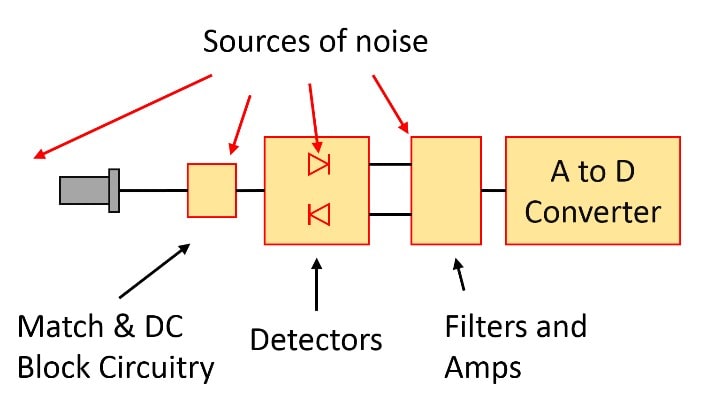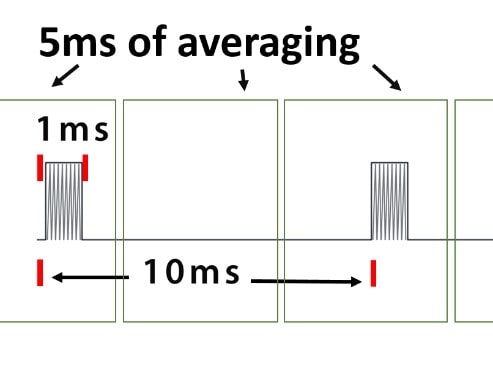Download this Whitepaper: Optimizing Averaging for Better Power Measurements
Background
What is averaging? Modern power sensors use a detector circuit coupled to analog to digital converters to measure signal power. The sample conversion occurs at a very rapid pace, often over a million times per second on any input signal including CW signals. This rapid conversion of the signal makes possible the measurement of very short variations in power level including noise in high sensitivity sensors such as LadyBug’s LB480A. Most modern power sensors whether they be thermal, diode or logger-based will have a fast analog to digital converter system.
To manage the measurements and create a stable result, individual digital converted values are averaged together as selected by the user. This is what we call averaging. In some instances averaging is referred to as integration or integration time, for the purposes of this paper we will use the term averaging. Averaging may be referred to in units of time or the number of samples. We generally refer to averages in terms of the number samples.
The samples may already have been pre-averaged by analog or digital methods. For example, in a diode detector circuit the diodes will drive a capacitor, this capacitor will establish the initial averaging. In many test system environments wherein measurement speed is very important, users may choose set averaging as low as possible, particularly if the signal is at a relatively high level. A power sensor user can set a LadyBug LB479A or LB480A to continuously collect over 2,000 pre-averaged measurements per second. Pre-averaging in these sensors is 124 samples for each of the 2,000 measurements. In this case, the downside can be measurement variation due to noise or other signal related factors on low level signals. Conversely, a power sensor user replacing a traditional thermal sensor and desiring a very stable measurement on a CW signal, may choose to set averaging to a very long period of time. Long averaging periods are often used to average out noise on low level.
Noise
Even though your settings may be different, whether you are looking at a CW signal or a Modulated signal, averaging works the same. A good example for the use of averaging is noise reduction.
Noise is always present in any electrical system, further all components generate electrical noise in some form or another. A simple internet search for “resistor noise” will net many, many results and may help put noise sources into perspective. Noise reduction in passive components is a science in itself. As a result of noise power, with no user signal present, there can be measurable power that may interfere with a low level signal when applied. Figure #2 depicts a power sensor input system with internal noise sources indicated.






